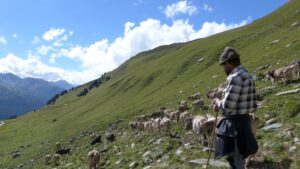Abstract/Description
Melting glaciers are icons of the climate crisis and severely impact local geohazards, regional freshwater availability, and global sea levels. Well-constrained observations of glacier mass change and associated uncertainties are required to assess these downstream impacts and provide the baseline for calibrating and validating models for future projections. Previous assessments of global glacier mass changes were hampered by spatial and temporal limitations and the heterogeneity of datasets from different observation methods. The Glacier Mass Balance Intercomparison Exercise (GlaMBIE) set out to tackle these challenges through a community effort to collect, homogenise, combine, and analyse glacier mass changes from in situ and remote-sensing observations.
This presentation summarises the results and lessons learned from the first GlaMBIE (2022−24) and introduces GlaMBIE-2, which is planned to run from 2025 to 2026. In GlaMBIE-2, we aim to compile additional mass-change estimates to broaden observational coverage from different methods, extend the data series back to 1992 to align with available ice-sheet estimates, and update the time series to 2025 to cover the latest developments. In addition, we are running pilot studies to better understand the apparent bias between digital elevation model (DEM) differencing and altimetry and to increase the spatio-temporal resolution of our estimates to further hydrological applications. We invite the research community to participate in this collaborative effort by contributing their expertise and glacier mass change data, whether from in situ observations, repeat mapping from optical imaging and radar interferometry, laser and radar altimetry, and gravimetry.


